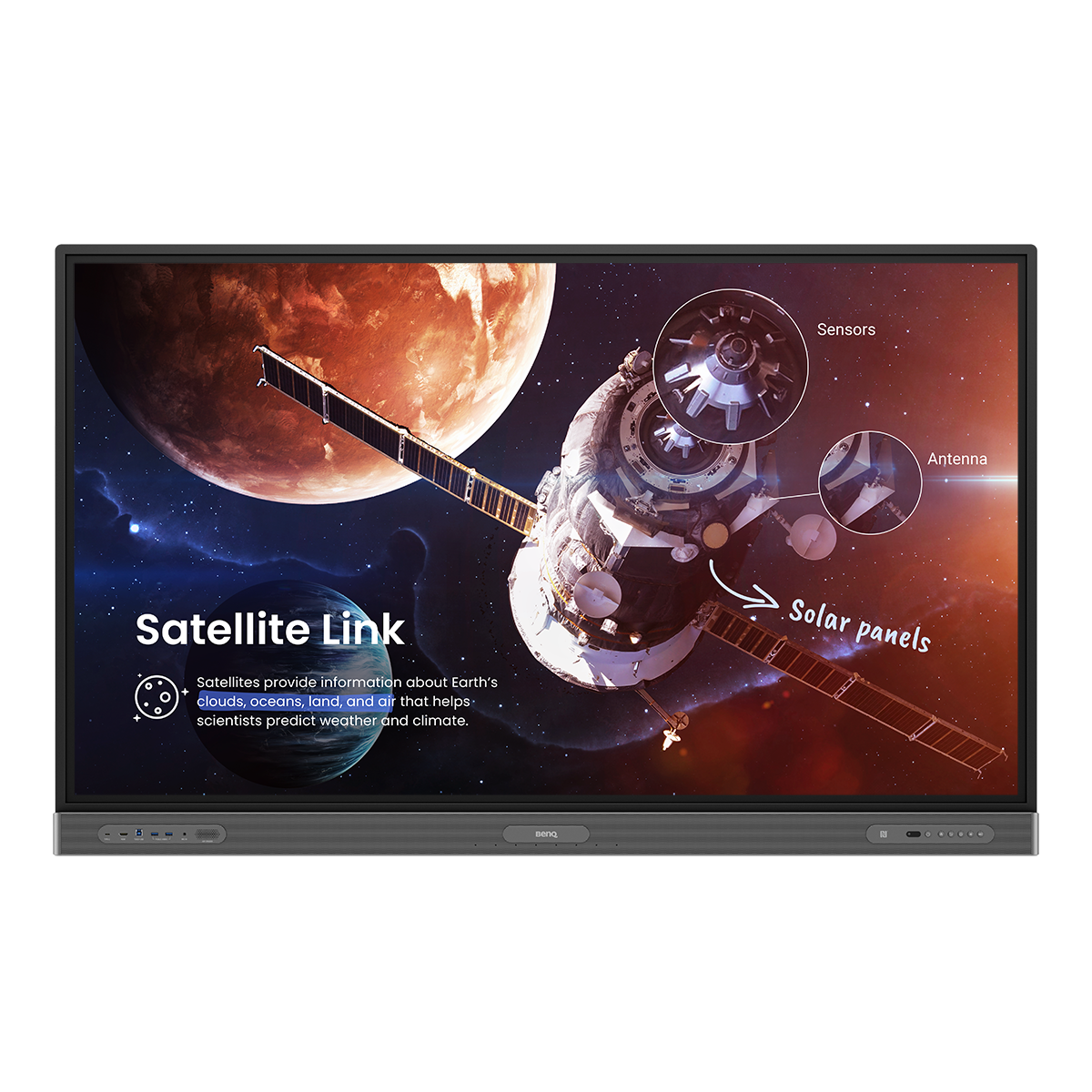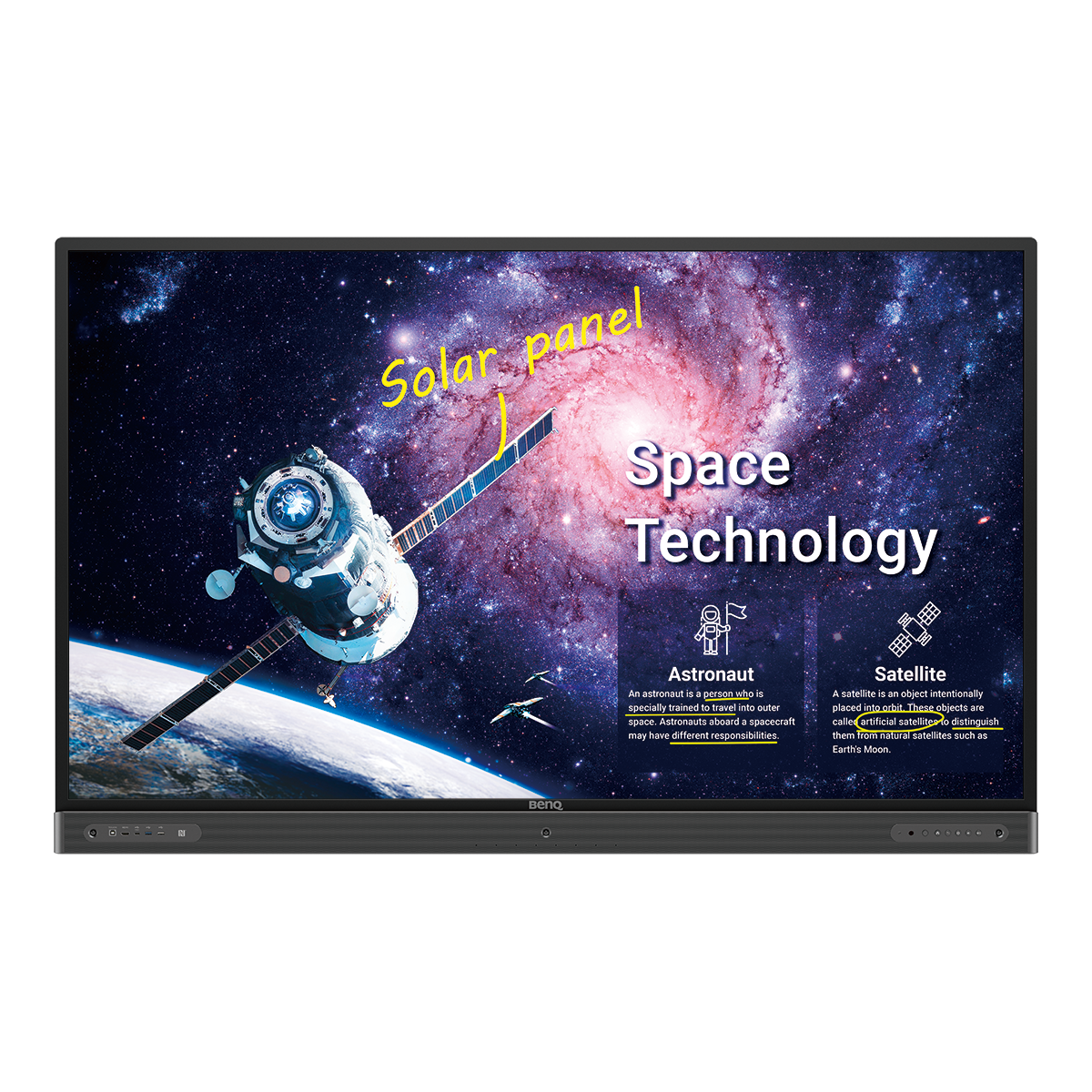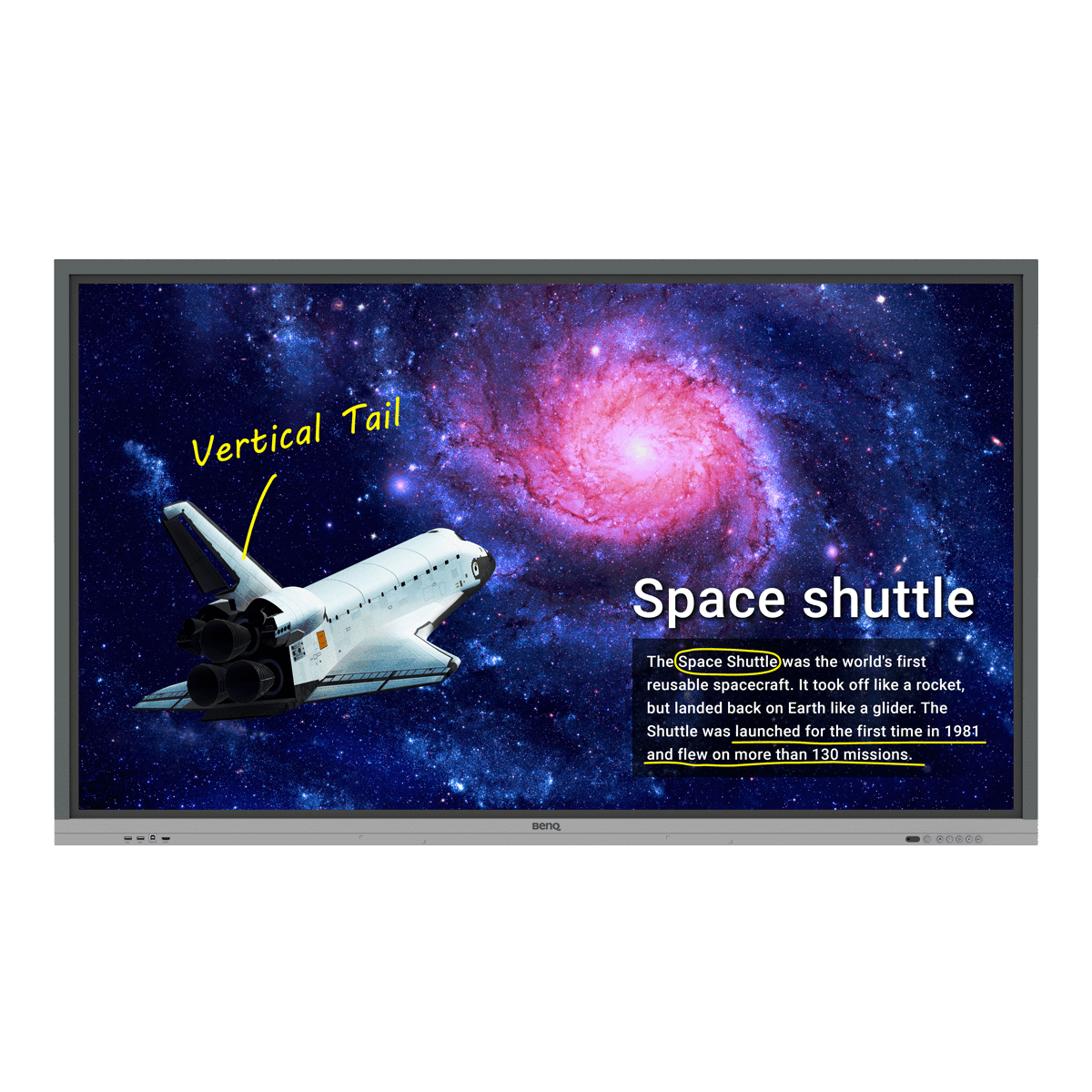Be it a whiteboard or a chalkboard, the board is the focal point of the classroom. Schools looking to transform the way they impart education are upgrading these boards to their digital counterpart—the smart board.


What is a smart board?
A smart board is a large interactive display that offers all the functionality of a conventional whiteboard with an added digital element. Smart boards enable more dynamic lessons, allowing teachers to make learning fun and students to engage actively.
Smart board technology has come a long way since the days of interactive whiteboards. As early as the late 1990s, schools began equipping their classrooms with the first smart boards. Back then, these innovative devices came in the form of responsive whiteboards powered by interactive projectors. In recent years, interactive displays have begun replacing them.
Smart boards are an all-in-one teaching solution designed to replace whiteboards, overhead projectors, and TV carts. Today, the most prominent smart board features include interactive whiteboard software, wireless screen sharing, a variety of built-in classroom tools, and videoconferencing support.
Learn more about smart boards here.
How educators use smart boards for teaching
Using smart boards in the classroom
The great thing about smart boards is that teachers can use them for virtually anything – to present lesson materials, enable engaging activities, conduct guided research, host group presentations, and so much more. By familiarizing themselves with all the features of a smart board, educators can better understand how these can be used to enhance lessons.


Best features of smart boards for teaching and learning
Below are some examples of how smart boards are used in classrooms:
- Whiteboarding software: Built-in whiteboards are used to give lessons and elaborate on topics visually. They are essentially whiteboards with expandable canvases and a variety of writing tools, making them ideal for hands-on activities.
Digital lesson materials: Smart boards are regularly used to import digital content like images, documents, and videos for more impactful lessons.
Wireless screen sharing: Teachers use wireless screen sharing to present lesson materials on a smart board straight from their laptops. It’s also a great tool for students with personal devices to give presentations or quickly share their work with the class.
Classroom tools: The ability to write and draw over anything on the screen helps teachers give all the necessary explanations. Built-in tools like rulers, protractors, calculators, and scoreboards make classes more interesting for students.
Internet access: One of the biggest benefits of a smart board is internet connectivity. Being connected to the web allows classrooms to access all the information the internet has to offer.
Lesson recordings: Screen recording makes it easy for teachers to record lessons and send them to students for review.
Videoconferencing: For classrooms that engage in remote learning, videoconferencing support is crucial. Smart boards let teachers host hybrid lessons with ease.
If you’re looking for a smart board with all these features, check out the BenQ Board Pro.
Smart boards in the classroom: pros and cons
Pros: Smart boards are powerful tools that make teaching more engaging. Packed with features to foster better education, smart boards offer teachers unlimited flexibility in the way they give lessons. Smart boards also add an element of fun for students, which improves learning retention.
Cons: For educators that are unfamiliar with the latest technology, teaching with a smart board may seem intimidating at first. Additionally, as smart boards are a significant upgrade from chalkboards, whiteboards, and older models of interactive whiteboards, making the change comes with an associated cost.
The best smart boards for schools
Schools seek out BenQ, Smart Technologies, and Promethean for their smart board needs. Those looking for the best smart board on the market should ensure it comes with all the features mentioned below.


Smart boards for teaching: active and blended learning
The ideal smart board is packed with powerful features that help students develop essential skills for the future. It should also provide educators with a wide range of resources for effective teaching, no matter the style or what personal devices are used.
Smart boards for preschools: hands-on activities
Smart boards for the youngest of learners should be sturdy, scratch-resistant displays reinforced with tempered glass. The best smart boards come with a built-in whiteboard and up to 40 points of simultaneous touch to enable fun hands-on lessons for the entire class.
Smart boards for elementary schools: interactive bulletin boards
For elementary schools, the ideal smart board provides quick access to cloud storage and a web browser. This lets educators teach with all types of lesson materials, be it content they create themselves or download from the internet, like worksheets or bulletin board activities.
Smart boards for middle schools and high schools
Secondary education classrooms need versatile tools that enable all sorts of learning activities. Wireless screen sharing, Google Workspace and Microsoft Office compatibility, and Google Classroom integration are necessary features for teachers to effectively reach every student in class.
Smart boards for classrooms: price
Equipping classrooms with smart boards is an important investment for your school. Smart board prices range from $3,000 to $7,500, depending on the brand, model, and size. The best way to find out which smart board is right for your school is to reach out to an education expert and get a quote.
Get started here.




